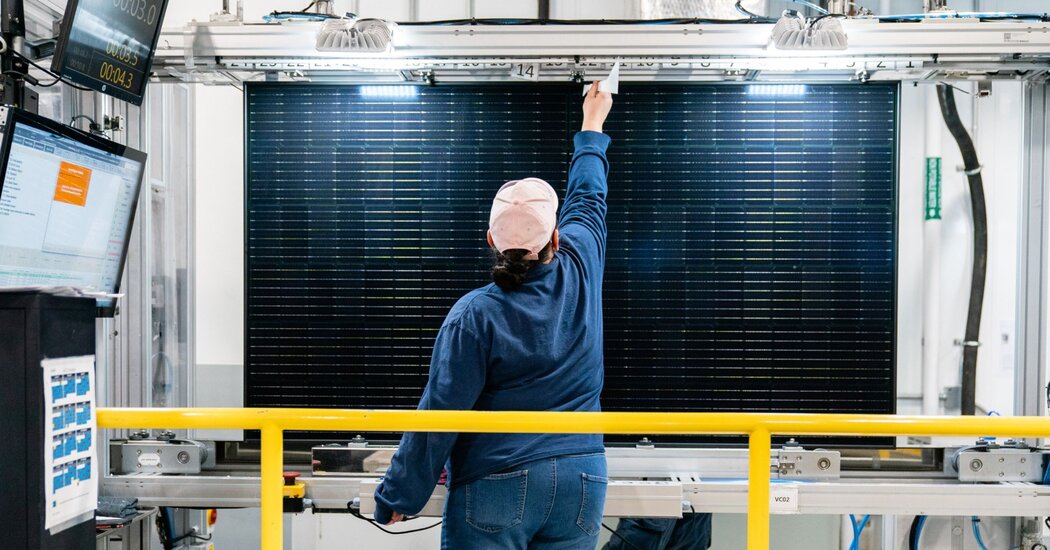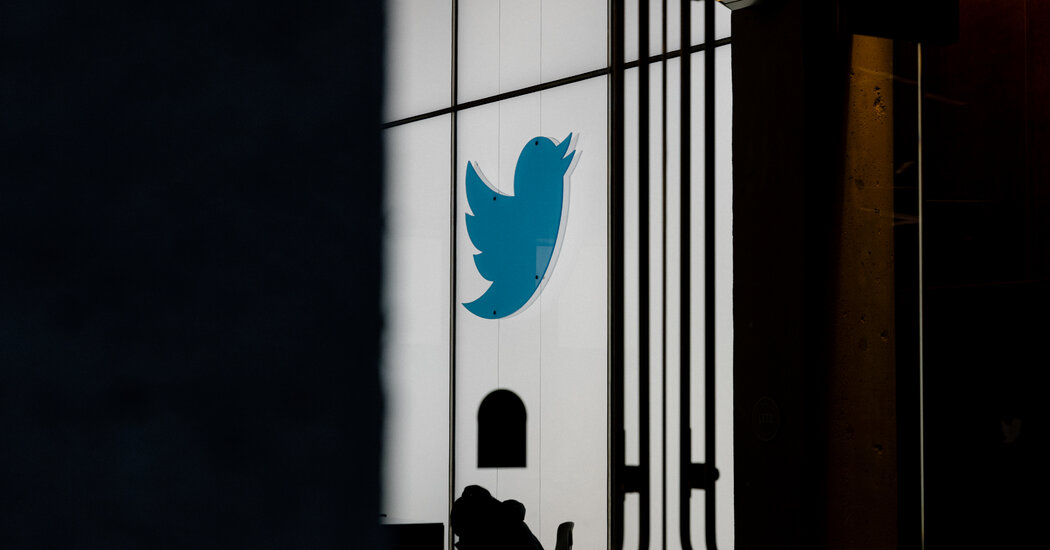Self-Driving Car Services Want to Expand in San Francisco Despite Recent Hiccups
Last week, a self-driving car stopped in the middle of a busy street during the morning rush hour in San Francisco, jamming traffic for nearly two miles. The car, which was operated by Waymo, did not leave the intersection until company technicians arrived about 10 minutes later and manually drove it away.
With services in San Francisco and Phoenix, Waymo, the self-driving car company owned by Google’s parent company, Alphabet, is one of two companies operating so-called robotaxis without drivers behind the wheel. The other, Cruise, a subsidiary of General Motors, offers a service in San Francisco.
The services are the culmination of more than 10 years of research, development and testing by the two companies. After pouring billions of dollars into the technology, both say they will soon introduce driverless services in other cities, too. But because automated vehicles still struggle to drive themselves in certain situations, some local officials are questioning whether the services are ready for widespread use.
The day before the Waymo car snarled traffic, the City of San Francisco sent letters to the California state regulator asking that it slow the expansion of the services until officials gain a better understanding of the technology and its limitations. The letters were reported earlier by NBC News.
After operating limited services in San Francisco for several months, both companies have requested permission from the California Public Utilities Commission to charge money for driverless rides across the city and around the clock. But until the services are better understood, the city said, it does not want them operating in downtown San Francisco or during peak commuting times in the morning or evening.
“If the commission approves sweeping authorizations for both Waymo and Cruise, the hazards and network impacts caused by planned and unplanned A.V. stops that obstruct traffic could soon affect a large percentage of all San Francisco travelers,” one of the letters said.
Both Cruise and Waymo said these letters were an expected part of their efforts to expand services in the city. “We have long appreciated a healthy dialogue with city officials and government agencies in California,” said Katherine Barna, a Waymo spokeswoman.
The City of San Francisco declined to comment beyond what it said in its letters. “We welcome any suggestions on safety,” said a Cruise spokesman, Aaron McLear.
The letters were the latest in back-and-forth talks among the companies, San Francisco officials and regulators.
Last year, Cruise began offering paid rides in driverless cars in certain parts of San Francisco between 10 p.m. and 5:30 a.m. And Waymo is now offering unpaid rides without drivers. But both companies still need regulatory approval before expanding commercial services without drivers across San Francisco. Waymo began offering paid rides in downtown Phoenix at the end of the year.
In August, Cruise asked the National Highway Traffic Safety Administration, the top federal regulator, to approve widespread tests of a new version of its self-driving car called Origin, which does not include a driver seat or a steering wheel. But San Francisco officials have expressed concern over this plan, too.
The plan, which could put as many as 5,000 of the new vehicles on the streets within two years, makes Cruise’s past issues “far more consequential,” the city said. If the company does not significantly improve performance of its technologies, it “could quickly exhaust emergency response resources and could undermine public confidence in all automated driving technology.”
The autonomous cars can watch for pedestrians, change lanes and make right-hand turns. But they may struggle to deal with more complicated or unusual situations, like unprotected left-hand turns and broken traffic lights that engineers call “edge cases,” because they do not happen as frequently as other scenarios.
“Sometimes these cars just need a human to help them out of a tough spot,” said Phil Koopman, an engineering professor at Carnegie Mellon University who specializes in autonomous vehicles.
Waymo has operated a driverless service in suburban Arizona since the end of 2020. But that is very different from a congested city.
“If you get disabled on a quiet suburban street, you are not in anyone’s way,” said Matt Wansley, a professor at the Cardozo School of Law in New York who specializes in emerging automotive technologies. “If you’re in the city, it’s a big deal.”
The Waymo car that blocked traffic in San Francisco last week entered a very complex and busy intersection “due to temporary road closures that precluded use of the intended route,” Waymo said.
When a car cannot navigate a situation on its own, remote technicians can send the car additional information that can help it get going again. And if that does not work, the company must send a crew to retrieve the car.
At the end of June, Cruise caused a similar traffic jam in San Francisco. The company had trouble communicating with many of the cars in its fleet, and as they stalled in one area of the city, all lined up in a row, they clogged traffic until technicians arrived and got them moving again.
In September, five stalled Cruise vehicles blocked the path of city bus, delaying its 45 riders for at least 13 minutes. Its cars have also interfered with firefighting efforts in the city, according to the letter from San Francisco officials. One car obstructed a fire truck on its way to a fire. Firefighters shattered another car’s window in an effort to prevent it from driving over their fire hoses.
Cruise cars have not caused life-threatening injuries or fatalities.
In the wake of such incidents, NHTSA, the federal regulator, recently opened an investigation into the company’s cars. The agency is concerned that the vehicles “may strand vehicle passengers in unsafe locations, such as lanes of travel or intersections, and become an unexpected obstacle to other road users.”
Cruise has repeatedly said it is working to prevent issues. But an independent review of the software systems that manage Cruise’s fleet indicated that these software systems were not suited to the kind of widespread services that Cruise hopes to operate.
This review, which was completed last summer and was recently obtained by The New York Times, examined the systems that allow the company to communicate with its vehicles and provide remote assistance when the cars cannot solve problems on their own.
“Core fleet systems have significant stability, responsiveness and scaling challenges which now present fundamental problems for the company,” the review said.
Conducted by consultants from IBM, the review said the systems, designed as a way of managing a small fleet of cars that included safety drivers, were not suited to a large fleet where the drivers had been removed.
“Further scaling with current platform will potentially compound existing issues,” the review said. “Ability to simultaneously enhance the current platform while stabilizing it is in question.”
A new system would require an additional $10 million to $20 million investment and most likely not be completed until the end of this year, according to the review. That is a relatively small expenditure considering the company spent more than $860 million on the development of its technology in the first half of last year.
Mr. McLear, the Cruise spokesman, said the company had fixed or addressed nearly every issue discussed in the review. “It is an outdated report,” he said.
Even if Cruise redesigns and rebuilds its management software, there will be times when the company must send a crew to retrieve cars if they get stuck. The same is true of Waymo, a company spokeswoman, Julia Ilina, said. The companies must also send technicians when the cars break down in more traditional ways, such as a flat tire or a traffic accident.
Because of these limitations — and the hundreds of millions of dollars the companies are pouring into research and development — it is unclear how services will become viable businesses.
“The question is: Does this make sense economically?” said Dr. Koopman, of Carnegie Mellon. “They are taking the drivers out of the front of the car. But if they have just as many people in a building waiting for the cars to break, they haven’t really solved anything.”


